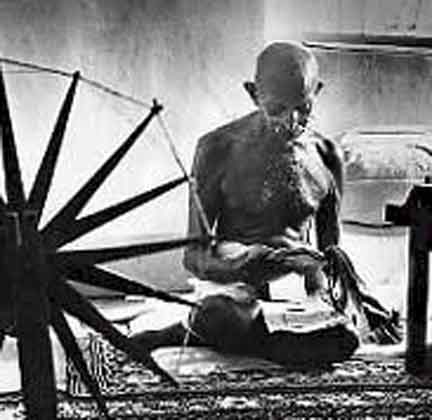Gandhi’s development model at work in Orissa village
 A telecom mobile tower stands next to a Mahatma Gandhi statue. This is an Orissa village’s tribute to the father of the nation.
A telecom mobile tower stands next to a Mahatma Gandhi statue. This is an Orissa village’s tribute to the father of the nation.
Living the Gandhian dream of Gram swaraj (village republic), Panimora’s residents have embraced technology and are more developed than most villages in Orissa’s Bargarh district, 400 km west of Bhubaneswar.
No Orissa village has produced as many freedom fighters (32) as Panimora has.
Gandhi’s photographs adorn houses. Many residents sing the Ramdhun as they spin cotton thread on charkhas (Gandhian spinning wheels).
The nearest theka (country-liquor outlet) is more than 10 kilometres outside the village.
Despite being a non-irrigated village, Panimora has done well on development parameters. It has two high schools, two banks and a health centre.
Says Gagan Bihari Parida, 69: “Panimora has achieved a lot by sticking to Gandhian ideology.”
His father Chamaru Parida, a freedom fighter, passed away in July at the ripe age of 90.
Jitendriya Pradhan, 88, says Gandhian ideals are on the wane.
Revolutionary poet Divya Kishore, who visited the village in 1937, inspired the village youth to join the freedom movement. They were jailed during the Quit India movement in 1942.
After Independence, they put Gandhi’s ideals of self-reliance with the village as a development unit into practice. In the 1970s, the Orissa Khadi Board helped promote self-employment in the village. Households contributed thread spun from spinning wheels to be made into khadi clothes.
But the death of freedom fighters one by one and the rise of electoral politics have upset Panimora’s development unit. Villagers had to abandon plans to renovate ponds owing to squabbling over funds. During the last general elections, money and liquor played a decisive role.
Hijacked by politicians, the khadi mandal has long shut shop.
“So far there has been no untouchability. But every time there is an election, unscrupulous elements whip up caste frenzy,” said a 30-year-old Dalit youth.
The belongings of freedom fighters and the charkhas have been dumped into a school. “With government help, a museum is being planned,” says Bimbadhar Deep, 34.
Indeed, they are fit just for a museum.